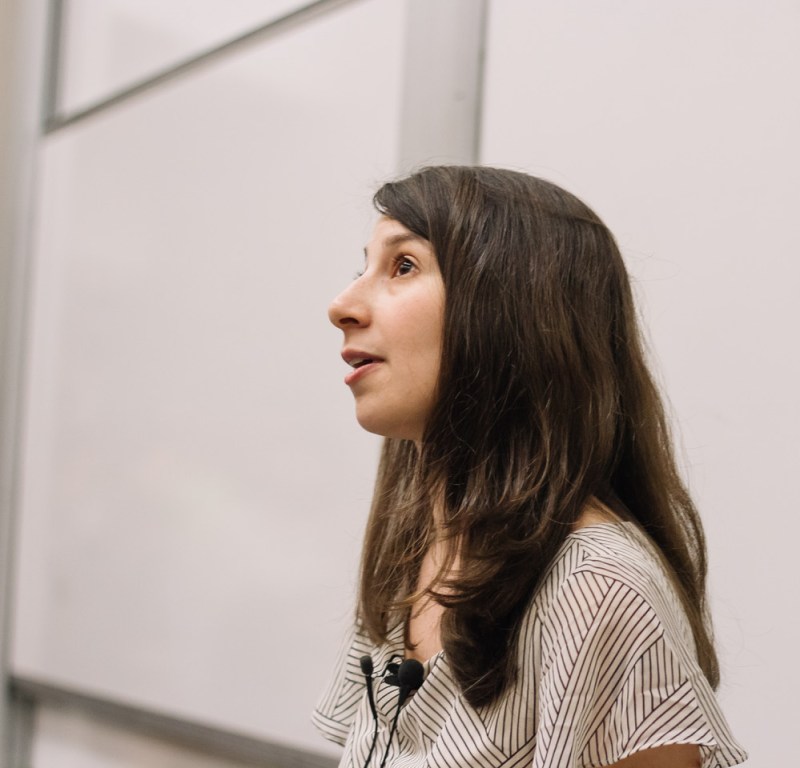On Wednesday evening, Dr. Katie Bouman explained how the image of a black hole 55 million light-years away could be displayed on a projector to an overflowing lecture hall on Stanford’s campus. Hovering over handrails, tucked away onto stairs and jammed into doorways, the audience members latched onto Bouman’s every word as she broke down how the scientific feat that captured the attention of the world was accomplished.
Bouman is a postdoctoral fellow at Harvard University and will become an assistant professor at the California Institute of Technology in June. When a picture of Bouman smiling in excited disbelief after processing the world’s first image of the black hole went viral, Bouman unexpectedly became the public image of the project.
The timing of the talk is quite fortunate, considering that it was actually scheduled two months ago — before Bouman became Internet-famous — as a part of the Stanford Center for Image Systems Engineering (SCIEN) lecture series.
In her lecture, she focused primarily on the technical details of creating the image of the black hole. In order to capture a black hole using just one telescope, Bouman explained, scientists would have to use a single dish telescope the size of the Earth. So instead, telescopes around the world were linked together in a process called a “very long baseline interferometry” to create a computational telescope — the Event Horizon Telescope (EHT).
The EHT measured the black hole at the center of the galaxy Messier 87 (M87). As the Earth rotated, baselines between telescopes would change and vast amounts of frequency data could be collected.
Since the EHT did not have locations at every single spot on Earth, it was only able to collect a sparse data set. The challenge was to turn that spotty data set into an actual image using algorithms.
According to Bouman, the scientists working with the EHT wanted to make sure that the image they produced was airtight. To do this, they first worked with synthetic data sets. A familiar image was blurred and distributed to several teams. The teams had to reconstruct the image using methods of their choice. Sometimes, images were conventional, like rings. Sometimes, scientists had to work with “crazy” images — like a snowman.
“They got a little mad at me for this one,” Bouman joked, referring to the snowman. “But it was a really important test to do, because we wanted to make sure we could see also something totally unexpected in the data.”
Then, four teams worldwide individually worked with the data from M87.
“We said, ‘Everyone go into your separate rooms, don’t speak to each other, work for seven weeks,’” Bouman explained.
Each team regrouped after they had come to their own conclusions to compare the images they had reconstructed, which, to everyone’s delight, looked remarkably similar: a ring, with the bottom half brighter than the top half.
After employing a variety of safety checks to ensure that the image they had constructed was not borne of human bias, the EHT team released the long-awaited picture of the black hole to the public on April 11. The picture of the glowing ring, created by light that had just escaped the pull of a black hole and curved around it, was widely circulated.
Bouman also addressed the media attention she received since the photo of her went viral, saying that she does not want to take all of the credit.
“This was really a huge team effort,” said Bouman. “I know there’s a lot out there in the media right now [that are] incorrectly saying that I made this picture of the black hole [myself], and that could be no farther from the truth. This is an effort from many people, over many years and many different backgrounds.”
Contact Anushree Thekkedath at anuthekk ‘at’ stanford.edu.
